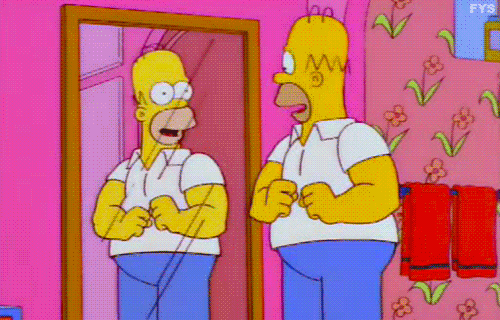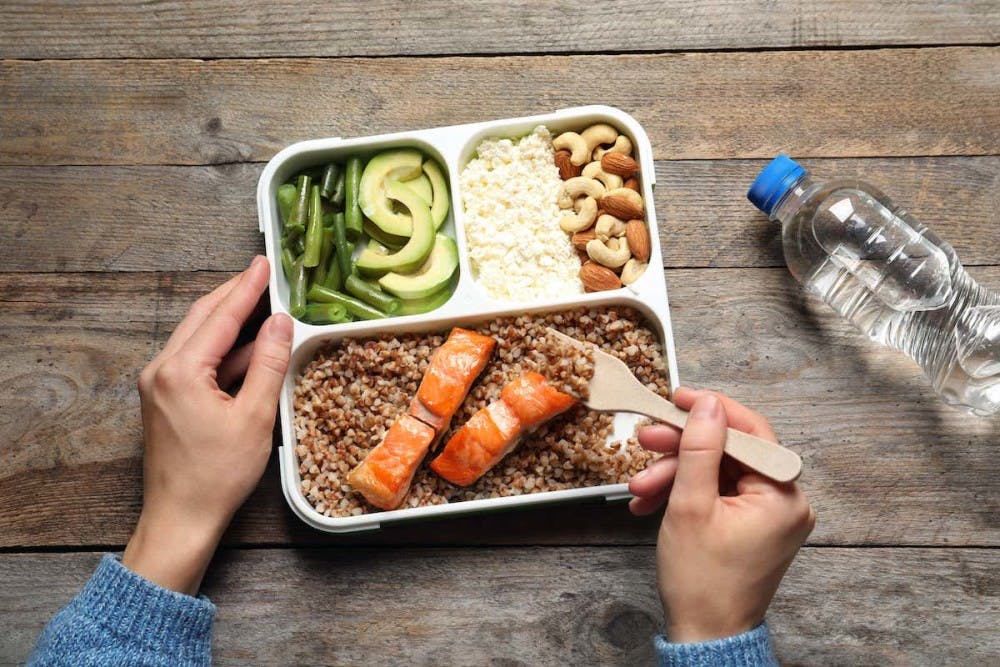How to Lose Fat and Gain Muscle at the Same Time
Our content strives to support, inform, and motivate you to meet your health goals. We want to be your trusted source of expert- and science-backed info dispensed in simple, actionable ways. Read our Editorial Guidelines.
If you’re wondering how to lose fat and gain muscle, well done for choosing some worthwhile goals! Muscle loss often accompanies weight loss, but you want to lose fat without losing muscle mass. Ideally, you want to lose body fat while building muscle, but you may be wondering if this is even possible.
Losing fat while gaining muscle is known as body recomposition (or “body recomp”), or altering your body composition. It can certainly be tricky, but it is indeed possible, and reliable resources and experts can help.
Read on to learn more about losing fat and gaining muscle, how to do both at the same time, and how a personal trainer can help.
How Do We Lose Fat and Gain Muscle?

In general, we burn fat stores when we’re in a calorie deficit, which is when we’re consuming fewer calories than we’re burning. When your body runs out of glucose to burn for fuel, it turns to fat stores. The trouble is, your body also breaks down muscle for fuel, depending on how severe the calorie deficit is as well as your other recent habits.
Meanwhile, gaining muscle typically requires us to consume a surplus of calories, more than our current caloric need for our body weight. This makes sense, because gaining muscle mass translates to gaining weight. Muscle weighs more than fat, so even if we lose fat while gaining muscle, our overall body weight may increase.
At this point, losing fat while building muscle might seem logically impossible: How can we be in a caloric deficit and a caloric surplus at the same time? Let's take a look.
How to Lose Fat and Gain Muscle

As you go through the list below, remember that body recomposition is complicated, and everyone has specific goals and needs. You might consider working with online personal trainers who can create a custom workout plan for you and support you throughout your journey.
Do Strength Training Workouts Three to Four Days per Week
A common weight loss mistake is to just focus on cardio without including strength training. However, strength training is an important component of weight loss.
Among the many benefits of resistance training is a decrease in visceral fat, according to an article from Current Sports Medicine Reports. This is in part because strength training increases your metabolic rate, helping you keep burning calories after your workout (like a bonus workout).
Of course, strength training is also necessary for muscle growth. A focus on progressive overload, or gradually and incrementally challenging your muscles as they grow, will help you continue building muscle mass and avoid hitting a plateau.
Whether called strength training, resistance training, or weight training, these exercises involve challenging your muscles with weight or resistance. It could involve lifting weights, but your body weight itself can be used for resistance. (Think about exercises like planks, pull-ups, or squats.)
Do HIIT Workouts Once or Twice a Week
High intensity interval training (HIIT) can be a great way to help you lose weight and build muscle. They combine cardio with strength training, giving you the benefits of both types of exercises in one workout.
What’s more, they can be done in as little as 5-10 minutes. High-intensity exercise is difficult (and dangerous) to sustain for much longer periods of time. The good news is that you’ll benefit from this exercise even if you only do it for a few minutes. In fact, it’s really important not to overdo it, especially as you’re getting started.
Because this exercise is so intense, you’ll want to avoid doing it on consecutive days, making sure your activities the day before and after are relatively light. Give yourself enough time to recover, and make sure you’re feeling well-rested and energized before trying it again. Over time, you can gradually make your HIIT workout more challenging as it becomes easier for you.
Include Active Recovery Days

On off days, do some light cardio. A brisk walk, a light jog, a bike ride, or a few laps in a pool are all great ways to keep your muscles loose and engaged while not overtaxing them. You’ll also burn calories, helping with fat loss.
As with the other types of exercise, do whatever amount you feel comfortable doing, and gradually add more challenges to the exercise over time as you feel ready.
Keep Your Calorie Deficit Small
If you really want to lose weight, you might think a particularly low-calorie intake will get you there faster – but this can cause muscle loss as well as fat loss. This is in part because maintaining your muscle mass requires a lot of energy, whereas breaking muscles down when they’re not being used gives your body extra energy when you’re depriving yourself. So, consuming enough calories will help prevent muscle loss.
Additionally, you don’t want to be in a calorie deficit all the time, since this won’t help you build muscle. A good rule of thumb is to eat fewer calories on cardio days and more calories on days when you do strength training. This is because you’ll need extra calories, specifically protein, to help your different muscle groups rebuild from resistance training. We'll talk about what kinds of calories to focus on in a bit.
However, a good personal trainer or dietitian can help you figure out an accurate estimate for your basal metabolic rate, or the number of calories your body burns while you’re at rest, which you can use as a baseline caloric intake. (Avoid online calculators, as these are less accurate.) Aim to be a little under the baseline on cardio days and a little over on strength training or HIIT workout days.
Focus on Lean Protein

When thinking about roughly how many calories to consume on a given day, keep in mind not all calories are equal. We get calories from macronutrients: protein, fat, and carbs. When it comes to both losing fat as well as building muscle tissue, focusing on getting enough protein is crucial.
A study from Nutrition Research found higher protein diets could help retain lean muscle mass during periods of weight loss. Increased protein consumption is also known to help build muscle after strength training workouts. So, protein is important for both cardio days and strength training days.
A review in the Journal of the International Society of Sports Nutrition found consuming between 0.7 grams and 1 gram of protein per pound of body weight to be the optimal protein intake for muscle growth, spaced out across four meals a day. For a 150-pound adult, this would amount to between 100 and 150 grams of protein a day, or 25-38 grams per meal.
This may seem like a lot, but focusing on including healthy, lean sources of protein in every meal and snack will help you. Think poultry, fish, tofu, tempeh, beans, lentils, chickpeas, nuts, seeds, whole grains, and low-fat dairy or soy milk. (Soy is very high in protein, especially compared to other milk alternatives.)
Some vegetables also have a modest amount of protein, specifically broccoli, Brussels sprouts, kale, spinach, and sweet potatoes. These veggies are also loaded with fiber (which is very low in calories and helps keep you full) as well as important vitamins and minerals, making them great for weight loss and muscle gain.
Eat Complex, Not Refined Carbs
Refined sugar and other refined carbohydrates (such as white bread) are low in micronutrients and fiber, making them easy to overeat. These types of carbohydrates are known to contribute to weight gain. When your goal is to lose fat, avoid eating many refined carbs.
That said, not all carbs are bad. In fact, some are necessary. Fiber is a complex carb that is great for fat loss, since it helps keep you full – and it also helps to fuel your strength training workouts. Fruits and vegetables are great sources of fiber.
Drink Plenty of Water

Drinking enough water is important when we’re trying to lose fat, since it can help moderate our appetite. In fact, we often mistake thirst for hunger, to the detriment of our weight loss goals. This suggests drinking more water can help you feel less hungry.
Hydration is also crucial for muscle recovery, so when your goal is to gain muscle mass, it’s especially important to make sure you’re drinking plenty of water. This keeps your muscles hydrated, allowing them to recover more quickly.
Take It Slowly
We all make the mistake sometimes of doing too much too soon. It’s totally understandable! We’re so pumped about our new body recomposition workout plan that maybe we overdo it a little during our first strength training workout.
The thing is, our muscles can’t grow if we don’t give them enough time to recover. Listen to your body, and don’t push yourself if you’re really feeling tired or sore. Instead, give yourself a break, and do something light – a leisurely stroll may help with the soreness.
Remember, real progress doesn’t happen overnight. It happens slowly and requires patience. Don’t expect yourself to do everything on this list perfectly starting tomorrow morning. Start with one or two sustainable changes, and when you’ve committed those changes to habit, add a few more.
How an Online Trainer Can Help

As we’ve seen, losing fat while gaining muscle is possible, but you need to go about it intentionally. Finding the right amount of caloric deficit on rest days and caloric surplus on strength training days can be tricky, as can finding the right high-protein diet for you. It may also take some time to figure out which strength training workouts are best for your specific goals.
This is where an online personal trainer can help. For just $3 a day, you can work with one of the trainers from Kickoff, who will help you come up with the right workout plan and diet for your goals and needs. Additionally, each trainer has a unique specialization, so you can find a trainer who specializes in whatever you would like to focus on the most.